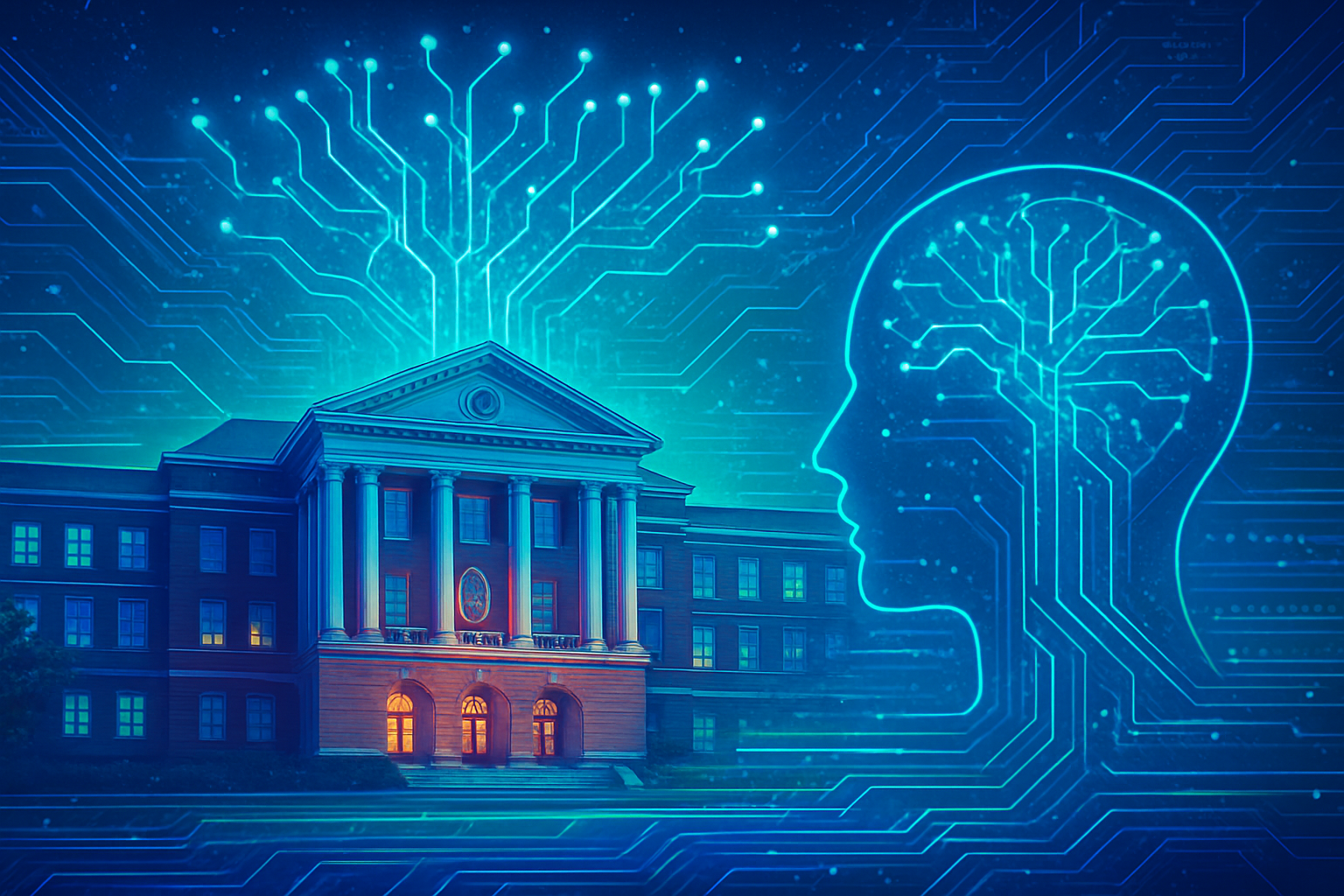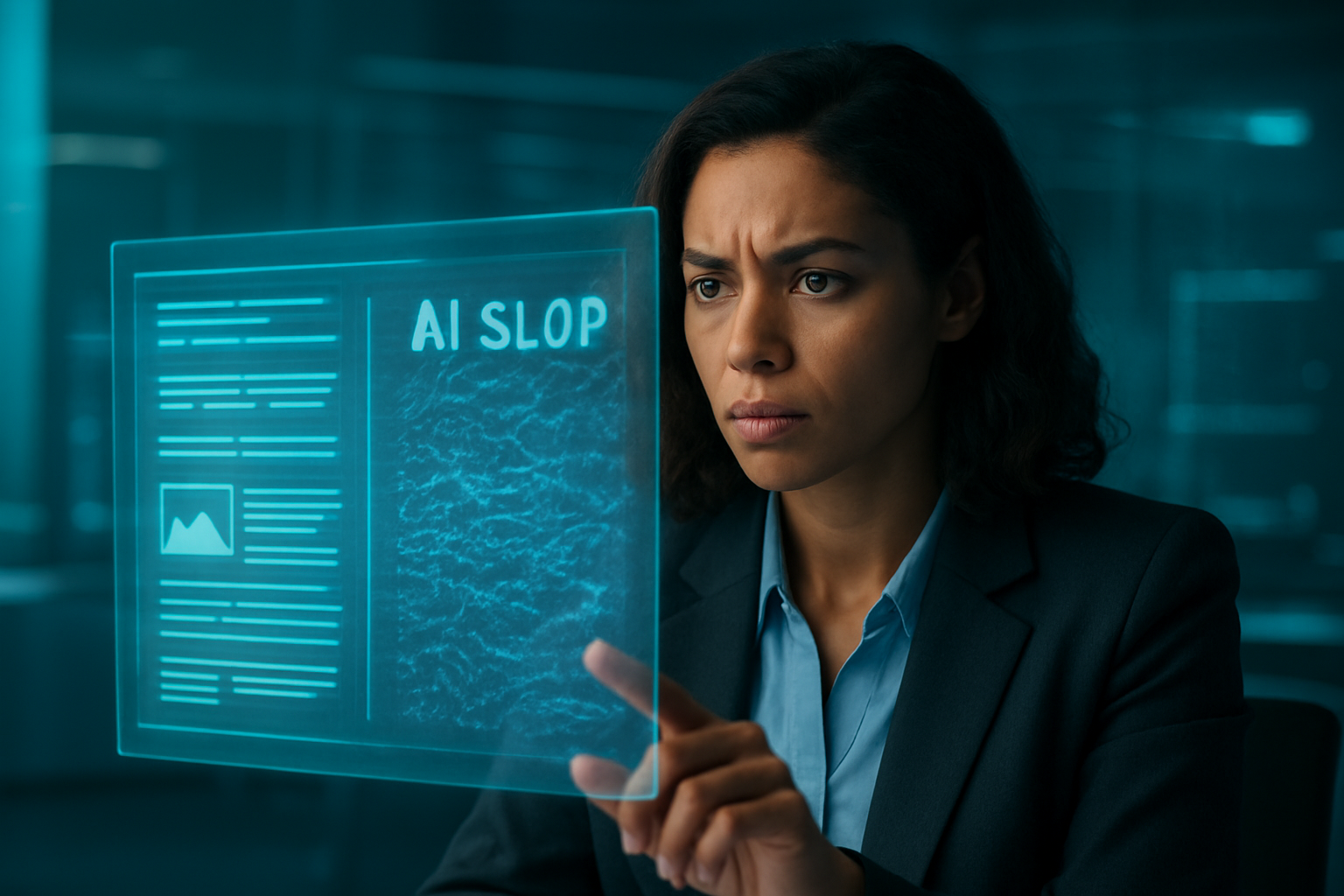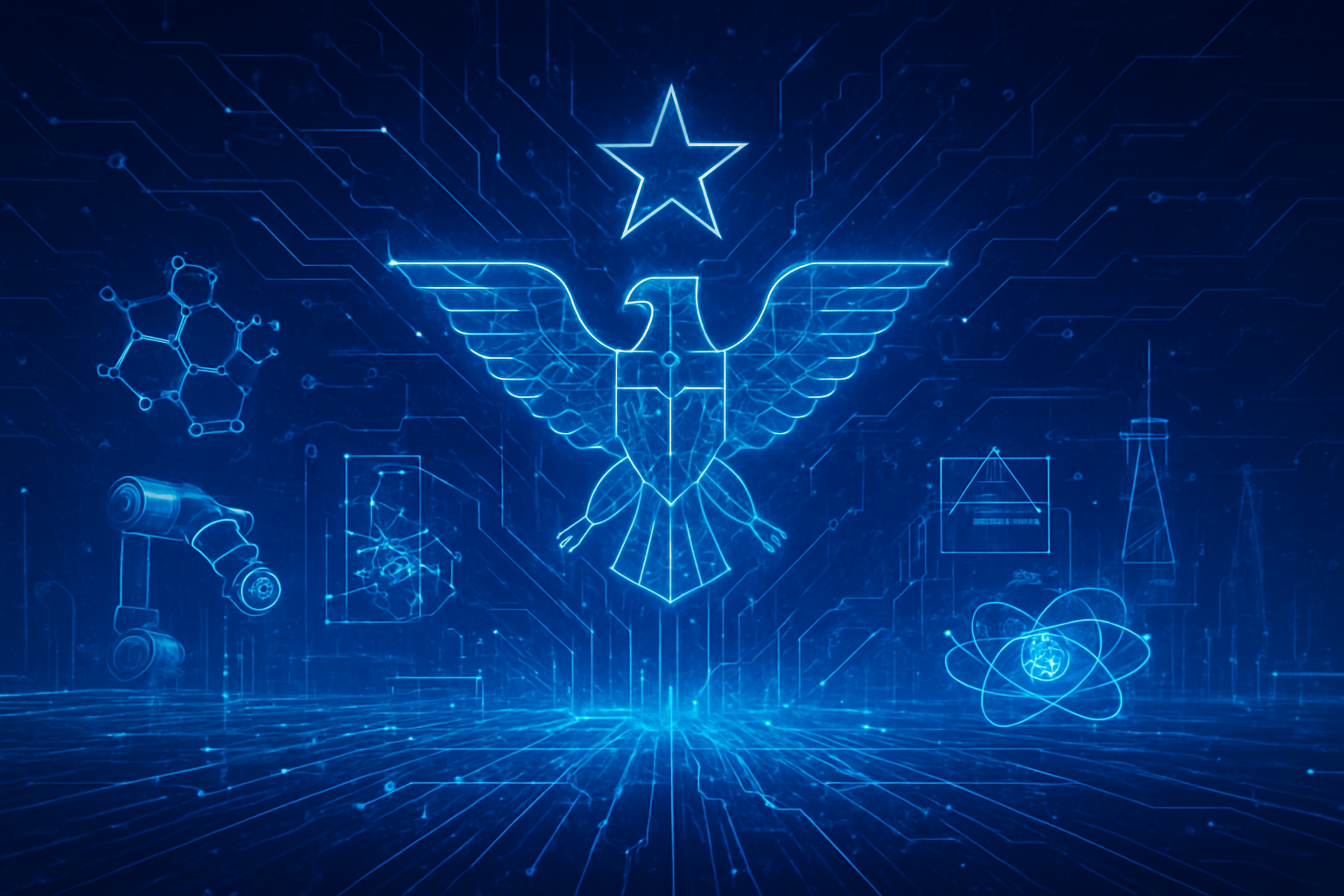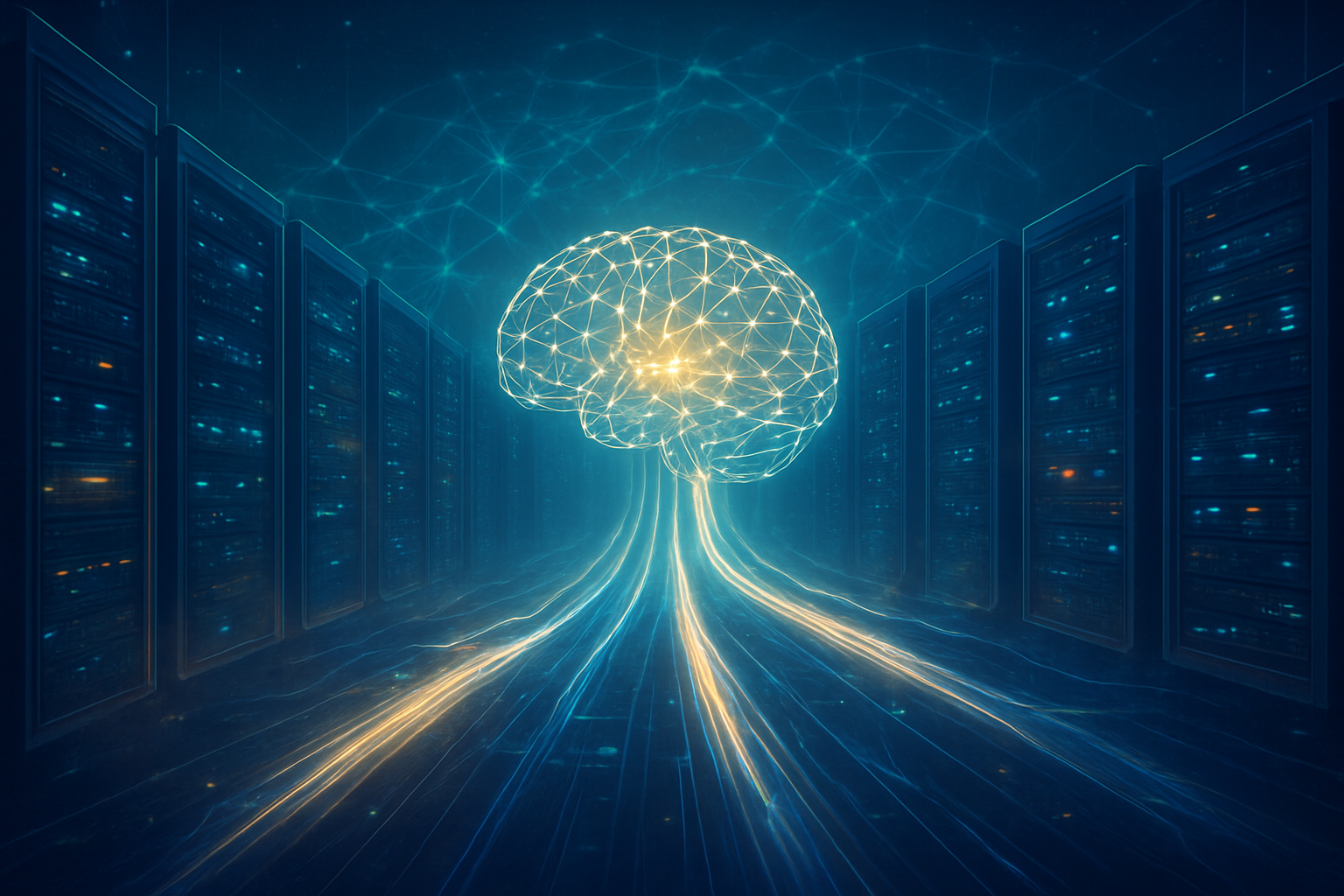Madison, WI – December 1, 2025 – The University of Wisconsin-Madison is on the cusp of a historic academic restructuring, proposing to elevate its current School of Computer, Data & Information Sciences (CDIS) into a standalone college dedicated to Artificial Intelligence and computing. This ambitious move, currently under strong consideration by university leadership, is not merely an organizational shift but a strategic declaration, positioning UW-Madison at the forefront of the global AI revolution. If approved, it would mark the first time the university has created a new college since 1979, underscoring the profound and transformative impact of AI on education, research, and industry.
This organizational pivot is driven by an urgent need to meet escalating demands in the rapidly evolving tech landscape, address unprecedented student growth in computing and data science programs, and amplify UW-Madison's influence in shaping the future of AI. The establishment of a dedicated college with its own dean would ensure that these critical fields have a prominent voice in top-level university decision-making, enhance fundraising capabilities to support innovation, and foster deeper interdisciplinary integration of AI across all academic disciplines. The decision reflects a clear recognition that AI is no longer a niche field but a foundational technology permeating every aspect of modern society.
A New Era of Academic and Research Specialization
The proposed College of AI and Computing is poised to fundamentally reshape academic programs, curriculum development, and research focus at UW-Madison. The university is already proactively integrating AI into its educational framework, developing strategies and offering workshops for educators on leveraging AI tools for course preparation, activity creation, and personalized student feedback. A core tenet of the new curriculum will be to equip students with critical AI literacy, problem-solving abilities, and robust bias detection skills, preparing them for an AI-driven professional world.
While specific new degree programs are still under development, the elevation of CDIS, which already houses the university's largest majors in Computer Science and Data Science, signals a robust foundation for expansion. The College of Engineering (NASDAQ: MSFT) currently offers a capstone certificate in Artificial Intelligence for Engineering Data Analytics, demonstrating an existing model for specialized, industry-relevant education. The broader trend across the UW System, with other campuses launching new AI-related majors, minors, and certificates, suggests that UW-Madison's new college will likely follow suit with a comprehensive suite of new academic credentials designed to meet diverse student and industry needs.
A core objective is to deeply embed AI and related disciplines across the entire university. This interdisciplinary approach is expected to influence diverse sectors, including engineering, nursing, business, law, education, and manufacturing. The Wisconsin Research, Innovation and Scholarly Excellence (RISE) Initiative, with AI as its inaugural focus (RISE-AI), explicitly aims to foster multidisciplinary collaborations, applying AI across various traditional disciplines while emphasizing both its technical aspects and human-centered implications. Existing interdisciplinary groups like the "Uncertainty and AI Group" (Un-AI) already explore AI through the lenses of humanities and social sciences, setting a precedent for this expansive vision.
The Computer Sciences Department at UW-Madison already boasts world-renowned research groups covering a broad spectrum of computing and AI. The new college will further advance specialized research in areas such as deep learning, foundation models, natural language processing, signal processing, learning theory, and optimization. Crucially, it will also focus on the human-centered dimensions of AI, ensuring trustworthiness, mitigating biases, preserving privacy, enhancing fairness, and developing appropriate AI policies and legal frameworks. To bolster these efforts, the university plans to recruit up to 50 new faculty positions across various departments through the RISE initiative, specifically focused on AI and related fields, ensuring a continuous pipeline of cutting-edge research and innovation.
Industry Ripe for Talent: Benefits for Tech Giants and Startups
The establishment of a dedicated AI and computing college at UW-Madison is poised to have significant positive implications across the AI industry, benefiting tech giants, established AI companies, and burgeoning startups alike. This strategic move is a direct response to the "gargantuan demand" for AI-oriented skillsets across all industries.
For tech giants like Google (NASDAQ: GOOGL) and Microsoft (NASDAQ: MSFT), the new college promises an enhanced talent pipeline. The significant expansion in graduates with specialized AI and computing skills will directly address the industry's critical talent shortage. UW-Madison's computer science major has seen an 800% growth in the past decade, becoming the largest on campus, with data science rapidly expanding to the second largest. This surge in AI-equipped graduates—proficient in machine learning, data mining, reinforcement learning, and neural networks—will be invaluable for companies seeking to fill roles such as machine learning engineers, data scientists, and cloud architects. Furthermore, a dedicated college would foster deeper interdisciplinary research, enabling breakthroughs in various sectors and streamlining collaborations, intellectual property analysis, and technology transfer, generating new revenue streams and accelerating technological progress.
Startups also stand to gain considerably. Access to a larger pool of skilled AI-savvy graduates from UW-Madison will make it easier for nascent companies to recruit individuals with the necessary technical acumen, helping them compete with larger corporations for talent. The new college is expected to foster entrepreneurship and create a focal point for recruiting in the region, strengthening the university's entrepreneurship ecosystem. Startups can directly benefit from the research and intellectual property generated by the college, potentially licensing university technologies and leveraging cutting-edge discoveries for their products and services. The Madison region already boasts a history of AI excellence and a thriving tech ecosystem, fueled by UW-Madison's innovation.
The competitive landscape will also be affected. While increasing the overall talent pool, the move will likely intensify competition for the most sought-after graduates, as more companies vie for individuals with highly specialized AI skills. Starting salaries for AI graduates often exceed those for traditional computer science majors, reflecting this demand. Moreover, this initiative strengthens Madison's position as a regional tech hub, potentially attracting more companies and investment to the area. Universities, through such colleges, become crucial centers for foundational and applied AI research, giving companies that effectively partner with or recruit from these institutions a significant competitive edge in developing next-generation AI technologies and applications.
A Broader Trend: AI's Place in Higher Education
UW-Madison's proposed AI and computing college is a powerful statement, reflecting a broader, global trend in higher education to formalize and elevate the study of artificial intelligence. It underscores the central and interdisciplinary role AI plays in modern academia and industry, positioning the institution to become a leader in this rapidly evolving landscape. This institutional commitment aligns with a global recognition of AI's transformative potential.
Across higher education, AI is viewed as both an immense opportunity and a significant challenge. Students have widely embraced AI tools, with surveys indicating that 80-90% use AI in their studies regularly. This high adoption rate by students contrasts with a more cautious approach from faculty, many of whom are still experimenting with AI or integrating it minimally. This disparity highlights a critical need for greater AI literacy and skills development for both students and educators, which the new college aims to address comprehensively. Universities are actively exploring AI's role in personalized learning, streamlining administration, enhancing research, and, critically, preparing the workforce for an AI-driven future.
The establishment of a dedicated AI college is expected to cement UW-Madison's position as a national leader in AI research and education, fostering innovation and attracting top talent. By design, the new college aims to integrate AI across diverse disciplines, promoting a broad application and understanding of AI's societal impact. Students will benefit from specialized curricula, personalized learning pathways, and access to cutting-edge research opportunities. Economically, stronger ties with industry, improved fundraising capabilities, and the fostering of entrepreneurship in AI are anticipated, potentially leading to the creation of new companies and job growth in the region. Furthermore, the focus on human-centered AI, ethics, and policy within the curriculum will prepare graduates to address the societal implications of AI responsibly.
However, potential concerns include academic integrity challenges due to widespread generative AI use, equity and access disparities if AI tools are not carefully designed, and data privacy and security risks necessitating robust governance. Faculty adaptation remains a hurdle, requiring significant institutional investment in professional development to effectively integrate AI into teaching. This move by UW-Madison parallels historical academic restructuring in response to emerging scientific and technological fields. While early AI efforts often formed within existing departments, more recent examples like Carnegie Mellon University's pioneering College of Computer Science in 1988, or the University of South Florida's Bellini College of Artificial Intelligence, Cybersecurity, and Computing in 2024, show a clear trend towards dedicated academic units. UW-Madison's proposal distinguishes itself by explicitly recognizing AI's transversal nature and the need for a dedicated college to integrate it across all disciplines, aiming to not only adapt to but also significantly influence the future trajectory of AI in higher education and society at large.
Charting the Future: Innovations and Challenges Ahead
The proposed AI and computing college at UW-Madison is set to catalyze a wave of near-term and long-term developments in academic offerings, research directions, and industry collaborations. In the immediate future, the university plans to roll out new degrees and certificates to meet the soaring demand in computing and AI fields. The new CDIS building, Morgridge Hall, which opened in early July 2025, will provide a state-of-the-art facility for these burgeoning programs, enhancing the student experience and fostering collaboration. The Wisconsin RISE-AI initiative will continue to drive research in core technical dimensions of AI, including deep learning, foundation models, natural language processing, and optimization, while the N+1 Institute focuses on next-generation computing systems.
Long-term, the vision is to deeply integrate AI and related disciplines into education and research across all university departments, ensuring that students campus-wide understand AI's relevance to their future careers. Beyond technical advancements, a crucial long-term focus will be on the human-centered implications of AI, working to ensure trustworthiness, mitigate biases, preserve privacy, enhance fairness, and establish robust AI policy and legal frameworks. The ambitious plan to add up to 50 new AI-focused faculty positions across various departments over the next three to five years underscores this expanded research agenda. The new college structure is expected to significantly enhance UW-Madison's ability to build business relationships and secure funding, fostering even deeper and more extensive partnerships with the private sector to facilitate the "technology transfer" of academic research into real-world applications and market innovations.
The work emerging from UW-Madison's AI and computing initiatives is expected to have broad societal impact. Potential applications span healthcare, such as improving genetic disorder diagnosis and advancing precision medicine; agriculture, by helping farmers detect crop diseases; and materials science, through predicting new materials. In business and industry, AI will continue to revolutionize sectors like finance, insurance, marketing, manufacturing, and transportation by streamlining operations and enabling data-driven decisions. Research into human-computer interaction with nascent technologies like AR/VR and robotics will also be a key area.
However, several challenges accompany these ambitious plans. Continued fundraising will be crucial, as the new Morgridge Hall faced a budget shortage. Recruiting 120-150 new faculty members across campus over the next 3-5 years is a significant undertaking. Universities must also carefully navigate the rapid progress in AI, much of which is driven by large tech companies, to ensure higher education continues to lead in innovation and foundational research. Ethical considerations, including AI trustworthiness, mitigating biases, preserving privacy, and establishing sound AI policy, remain paramount. While AI creates new opportunities, concerns about its potential to disrupt and even replace entry-level jobs necessitate a focus on specialized AI skillsets.
Experts at UW-Madison anticipate that elevating CDIS to a college will give computing, data, and AI a more prominent voice in campus leadership, crucial given their central role across disciplines. Remzi Arpaci-Dusseau, Director of CDIS, believes this move will help the university keep up with changing demands, improve fundraising, and integrate AI more effectively across the university, asserting that Wisconsin is "very well-positioned to be a leader" in AI development. Professor Patrick McDaniel foresees AI advancement leading to "sweeping disruption" in the "social fabric" globally, comparable to the industrial revolution, potentially ushering in a "renaissance" where human efforts shift towards more creative endeavors. While AI tools will accelerate programming, they are not expected to entirely replace computer science jobs, instead creating new, specialized opportunities for those willing to learn and master AI. The emergence of numerous new companies capitalizing on novel AI capabilities, previously considered science fiction, is also widely predicted.
A Defining Moment for UW-Madison and AI Education
UW-Madison's proposal to establish a dedicated College of AI and Computing marks a defining moment, not only for the university but for the broader landscape of artificial intelligence education and research. This strategic organizational restructuring is a clear acknowledgment of AI's pervasive influence and its critical role in shaping the future. The university's proactive stance in creating a standalone college reflects an understanding that traditional departmental structures may no longer suffice to harness the full potential of AI's interdisciplinary nature and rapid advancements.
The key takeaways from this development are manifold: a strengthened commitment to academic leadership in AI, a significantly enhanced talent pipeline for a hungry industry, deeper integration of AI across diverse academic fields, and a robust framework for ethical AI development. By elevating AI and computing to the college level, UW-Madison is not just adapting to current trends but actively positioning itself as an architect of future AI innovation. This move will undoubtedly attract top-tier faculty and students, foster groundbreaking research, and forge stronger, more impactful partnerships with the private sector, ranging from tech giants to emerging startups.
In the long term, this development is poised to profoundly impact how AI is taught, researched, and applied, influencing everything from healthcare and agriculture to business and human-computer interaction. The focus on human-centered AI, ethics, and policy within the curriculum is particularly significant, aiming to cultivate a generation of AI professionals who are not only technically proficient but also socially responsible. As we move into the coming weeks and months, all eyes will be on UW-Madison as it navigates the final stages of this proposal. The successful implementation of this new college, coupled with the ongoing Wisconsin RISE initiative and the opening of Morgridge Hall, will solidify the university's standing as a pivotal institution in the global AI ecosystem. This bold step promises to shape the trajectory of AI for decades to come, serving as a model for other academic institutions grappling with the transformative power of artificial intelligence.
This content is intended for informational purposes only and represents analysis of current AI developments.
TokenRing AI delivers enterprise-grade solutions for multi-agent AI workflow orchestration, AI-powered development tools, and seamless remote collaboration platforms.
For more information, visit https://www.tokenring.ai/.









